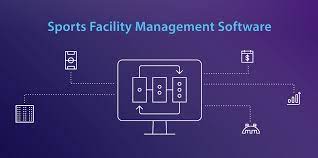Why Emergency Preparedness for ARC Facilities Is More Critical Than Ever

Every building tells a story. Beneath the surface of walls and ceilings lies a complex infrastructure built to support lives, operations, and progress. But what happens when an emergency threatens that very structure? Fires, floods, power outages, chemical spills, even active shooter situations—can strike unexpectedly. In such moments, every second counts, and emergency preparedness becomes the unsung hero behind the scenes.
In today’s evolving risk landscape, it's no longer enough for facility managers to rely solely on reactionary protocols. Instead, they need proactive systems, rapid access to building plans, and a strategic understanding of how to manage critical incidents before, during, and after they occur.
Understanding Emergency Preparedness for Emergency Situations
At its core, emergency preparedness refers to a facility’s ability to anticipate, plan for, and effectively respond to emergencies that could compromise safety, operations, or structural integrity. Unlike general disaster planning, which might focus on community-level strategies, facility-specific preparedness requires a deep knowledge of the building’s internal systems, layout, and historical records.
This is particularly crucial for large campuses, hospitals, educational institutions, government buildings, and corporate headquarters—places where multiple systems intertwine and where downtime is not just inconvenient, but potentially life-threatening.
The Role of Facility Management in Crisis Readiness
In most organizations, emergency preparedness is viewed through the lens of security or health and safety teams. But facility managers are often the first point of contact when something goes wrong. From coordinating fire drills and lockdowns to ensuring access to shut-off valves or backup generators, their role in emergency response is indispensable.
Facility teams are also responsible for maintaining the data that drives decision-making during a crisis. Blueprints, electrical layouts, HVAC diagrams, emergency exits, and maintenance records must all be easily accessible and up to date. Delays in locating these documents can lead to confusion and costly errors during emergencies.
Challenges in Emergency Planning for Facility Teams
One of the biggest obstacles in emergency preparedness is fragmented information. Legacy buildings often store vital data in physical folders, basement cabinets, or disparate digital drives. When a fire alarm goes off or a gas leak is detected, the last thing anyone wants is to waste time rifling through outdated paper plans.
Furthermore, many facilities still operate without real-time visibility into their systems. Without a centralized platform to manage emergency protocols and building intelligence, even a well-trained team can be caught off guard.
Another overlooked challenge is continuity planning. Emergency preparedness is not just about immediate response but also about recovery and business continuity. After the dust settles, how fast can operations resume? Are all systems accounted for? Has the structural integrity been compromised? These are questions only proper planning can answer.
Digital Transformation in Emergency Preparedness
The growing digitization of facility management has revolutionized how organizations approach emergency planning. Platforms now enable facility teams to access emergency plans, floor layouts, safety protocols, and equipment locations instantly—from any device, anywhere.
While this blog does not aim to promote any one solution, it's important to recognize how technology has reshaped emergency preparedness. Smart systems can integrate building information with emergency workflows, notify response teams instantly, and even simulate crisis scenarios for training purposes.
By transforming static information into actionable insights, digital solutions help teams respond faster and more effectively. In emergencies, response time is everything—sometimes the difference between minor damage and catastrophic loss.
Importance of Training and Drills
Planning is only half the equation. Execution is what ultimately saves lives. The closest electrical panel is flagged simultaneously, and the electrical crew receives automated notifications.
These exercises should be realistic, building-specific, and continuously updated to reflect changes in facility layout, workforce, or potential threats. For instance, a newly constructed wing or a recently installed security system could alter evacuation protocols.
Additionally, coordination with local emergency services—fire departments, police, EMS—is vital. They must be familiar with the facility layout and have access to critical information in advance. Joint training exercises enhance communication and minimize confusion during real events.
Building a Culture of Preparedness
True emergency preparedness doesn't live in a binder or a one-time checklist. It is a culture—an ongoing commitment shared across departments. Everyone, not just facility teams, must be empowered to identify risks, understand procedures, and act when needed.
This cultural shift often starts with leadership. When executives prioritize risk mitigation and support facility management in their efforts, it sends a powerful message that safety is not negotiable. From installing emergency lighting systems to conducting after-action reviews, leadership buy-in can greatly elevate preparedness levels.
Looking Ahead: Resilience Is the New Standard
As threats become more complex—climate change-induced weather events, cyber-physical attacks, pandemics—the demands on emergency preparedness will continue to evolve. Facilities are no longer just bricks and mortar; they are dynamic ecosystems where technology, people, and processes intersect.
In the future, resilience will be measured not just by how buildings withstand disasters but by how quickly and efficiently they recover from them. Facility managers who embrace this mindset will not only protect assets but also safeguard human lives.
Conclusion
Emergencies are inevitable—but chaos is not. With the right planning, tools, and mindset, emergency preparedness can transition from a reactive function to a proactive strategy. It's about more than compliance or protocol; it’s about creating a built environment where safety is embedded into every decision, every system, and every square foot.
Organizations managing complex infrastructures often rely on centralized platforms like ARC Facilities to access building information swiftly during critical situations. While solutions vary, the goal remains the same—ensuring facility teams have what they need, when they need it, to respond with speed and accuracy.
Note: IndiBlogHub features both user-submitted and editorial content. We do not verify third-party contributions. Read our Disclaimer and Privacy Policyfor details.







